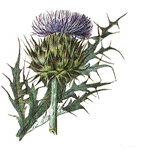Papers in the Biological Sciences
Date of this Version
2012
Citation
Published in Oecologia 169 (2012), pp. 467–476; doi: 10.1007/s00442-011-2207-6
Abstract
The biotic resistance hypothesis is a dominant paradigm for why some introduced species fail to become invasive in novel environments. However, predictions of this hypothesis require further empirical field tests. Here, we focus on evaluating two biotic factors known to severely limit plants, interspecific competition and insect herbivory, as mechanisms of biotic resistance. We experimentally evaluated the independent and combined effects of three levels of competition by tallgrass prairie vegetation and two levels of herbivory by native insects on seedling regeneration, size, and subsequent flowering of the Eurasian Cirsium vulgare, a known invasive species elsewhere, and compared its responses to those of the ecologically similar and co-occurring native congener C. altissimum. Seedling emergence of C. vulgare was greater than that of C. altissimum, and that emergence was reduced by the highest level of interspecific competition. Insect leaf herbivory was also greater on C. vulgare than on C. altissimum at all levels of competition. Herbivory on seedlings dramatically decreased the proportion of C. vulgare producing flower heads at all competition levels, but especially at the high competition level. Competition and herbivory interacted to significantly decrease plant survival and biomass, especially for C. vulgare. Thus, both competition and herbivory limited regeneration of both thistles, but their effects on seedling emergence, survival, size and subsequent reproduction were greater for C. vulgare than for C. altissimum. These results help explain the unexpectedly low abundance recorded for C. vulgare in western tallgrass prairie, and also provide strong support for the biotic resistance hypothesis.


Comments
Copyright © 2011 Springer-Verlag. Used by permission.